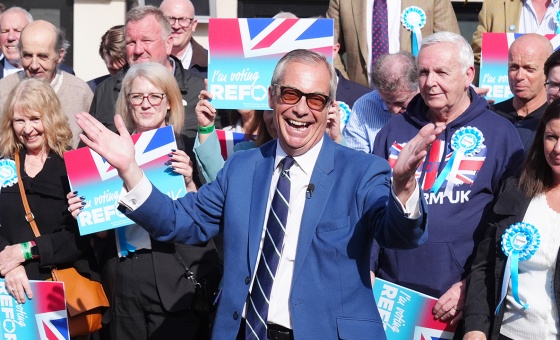This is the last article you can read this month
You can read more article this month
You can read more articles this month
Sorry your limit is up for this month
Reset on:
Please help support the Morning Star by subscribing here
I'M A massive Batman fan. I have the bedsheets, even as an adult, canvases on my wall, statues in my room, tattoos on my arm. Maybe fan is an understatement.
Some have questioned why I like Batman, asking why I don’t favour Superman instead — a migrant living in a foreign land trying to help those around him, despite those same people hating him because he isn’t from where they are.
People tell me that Batman is the poster boy of capitalism, a super-rich individual who beats up those less fortunate than him, those who are just trying to put food on the table. And he's a man who attacks those with mental health issues, including The Joker who has been declared insane for countless decades.
Yet Batman v Joker, the Dark Knight v the Clown Prince of Crime, is an age-old tale of good v evil, in which Batman plays the role of the superhero and The Joker that of the villain. But in Sean Murphy and Matt Hollingsworth’s graphic novel Batman: The White Knight, the roles are reversed. The Joker is the hero and the novel tells his story as the White Knight, the saviour of the people, who's protecting them against Batman.
It’s a genius storyline. Instead of being the maniac killer, the Joker — Jack Napier in this incarnation — has been cured of his insane homicidal tendencies in Arkham Asylum and is now trying to save Gotham from Batman, the very man who put him away.
“The greatest villain is Gotham City is you,” the Joker tells the caped crusader. And maybe he is right. Without Batman, you could argue that these supervillains wouldn’t be running around the city.
“If Batman had been wearing a badge, you’d charge him with assault,” Officer Bullock tells Commissioner Gordon after Batman has once again beaten the Joker to a pulp and left him in intensive care.
That the story is slated for only eight issues is a shame because the potential is amazing. Seeing Batman as full-time villain opens up endless storylines and plots. Maybe, by the end, Napier will transform back to the Joker and end the narrative that the Batman is the villain and has been all along.
But, in the first issue alone, he raises countless arguments against Batman being the good guy. By running around recklessly, he does more damage than most villains. How many times in chasing the likes of the Riddler and Penguin has he destroyed buildings, cars and injured innocent bystanders who had the misfortune of being in the wrong place at the wrong time?
“I love Gotham,” says Napier. “And it’s time I paid her back for the debt owed by the Joker. The city deserves better than you, better than the Joker and better than the Dark Knight. So I’m going to be her White Knight.”
A terrific ending to the first issue and the second starts with Napier accusing the Gotham City Police Department of corruption, inducing his mental health issues to keep him locked up and make money off him and others.
And Batman: White Knight takes something of a feminist slant. When Napier talks to Harley Quinn, the Suicide Squad member wearing tight shorts and a crop top, she's interrupted by the original character in full red-and-black jumpsuit — the best version and the one I have a tattoo of.
“A violent cheerleader with a big rack? I don’t think so,” says the original Quinn. “And don’t get me started on the clothes. Kind of a step back for feminism.”
White Knight has it all — can't wait to see where it all leads.






